From securing to restoring: a turning point for Notre-Dame

The end of summer brought a wind of change to the Ile de la Cité. Notre-Dame de Paris is now safe and consolidated, allowing the site teams to rejoice, but also to prepare the first restoration work on the building.
This making-safe phase had started immediately after the fire. It was completed in accordance with the schedule set: its final stages mark the end of a meticulous rescue plan for the cathedral.
Securing the base of the fans of the transept crossing
After consolidating the weakened vaults using wooden intrados (see photo below), the complex operation of removing the fan bases* was finalised in August. This step, necessary for the reconstruction of the transept crossing and spire, took place in three stages: stabilisation of the fan bases using oakum plasters, installation of scaffolding then intervention of the stonemasons to remove the plasters and take away the stones one by one, until the healthy parts are reached.
*base of the vaults and the transept crossing
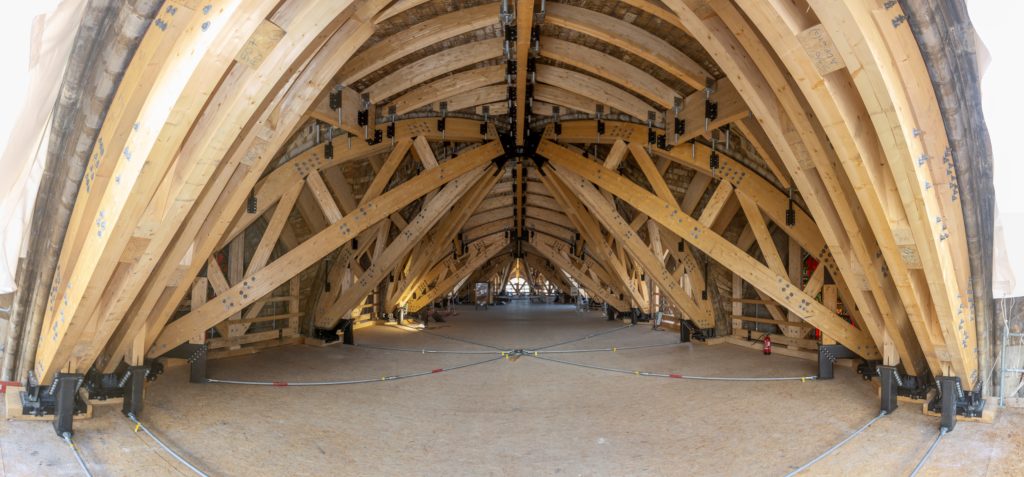
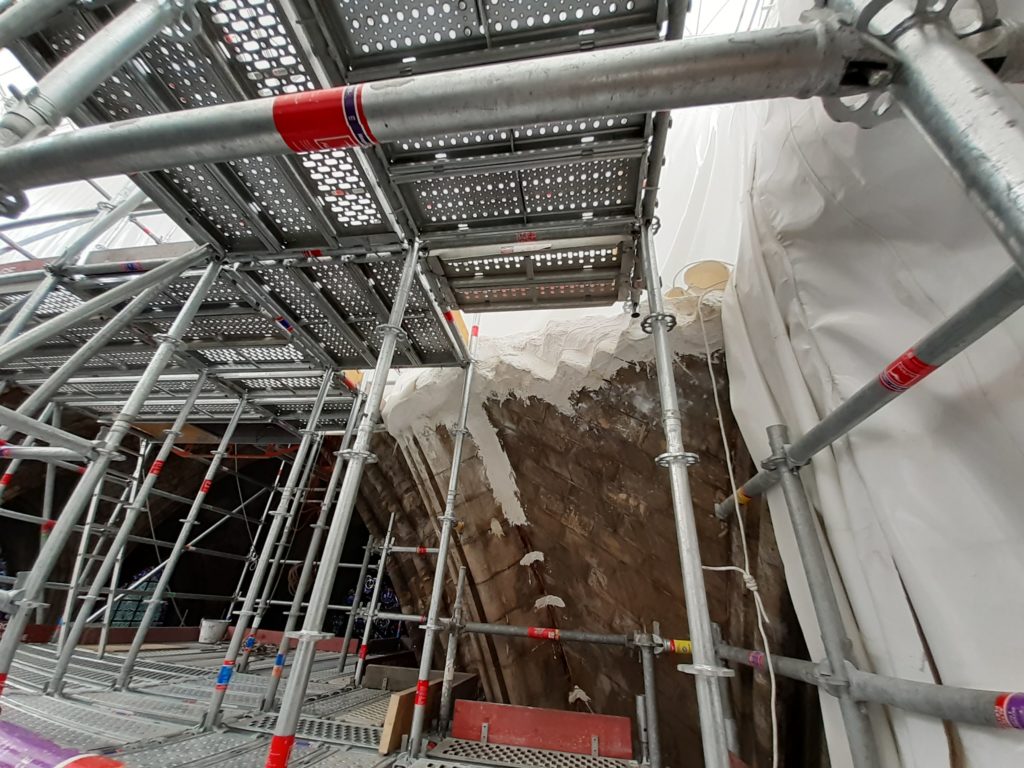
Waterproofing the cathedral
Also completed, the waterproofing of the transept crossing provided the building with a 20 m long and 14 m wide umbrella. Composed of two sliding sections, this temporary roof now covers the void left by the collapse of the transept crossing.
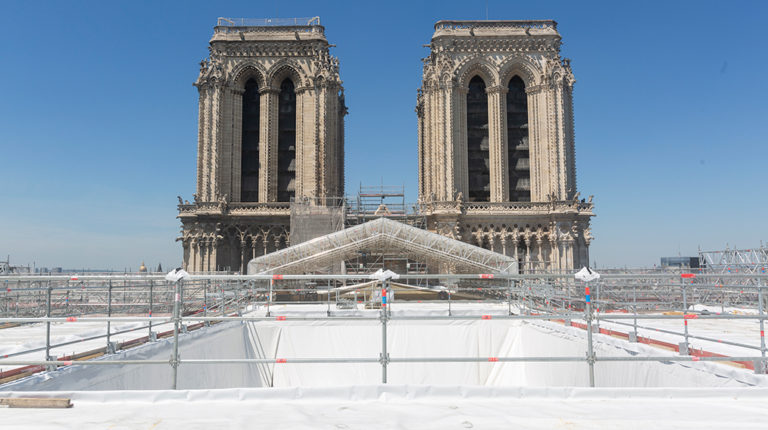
Deconstructing the podium and removing the choir organ
The liturgical platform located at the junction of the transept crossing and choir, which had been badly damaged, was removed in May. It will be rebuilt as part of the full restoration of the monument. Also taken out, the choir organ installed in 1969: damaged by flames and water from the firefighters, this historic instrument was delicately dismantled by the organ builders from the Cattiaux-Chevron workshop. After expert review, the few reusable parts were sent to warehouses in the Paris region.
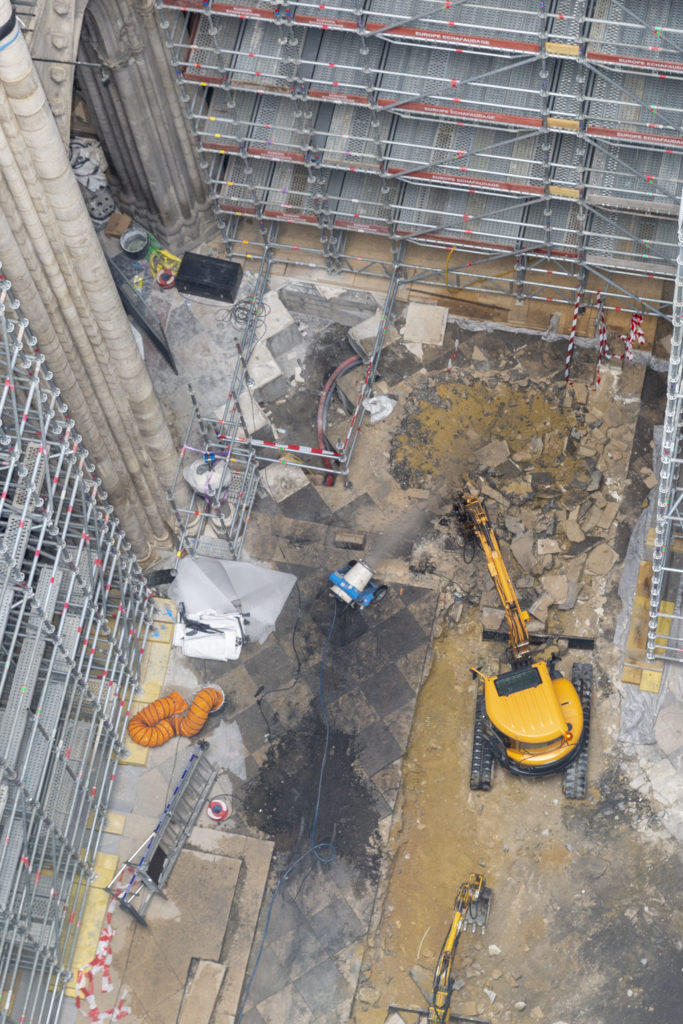
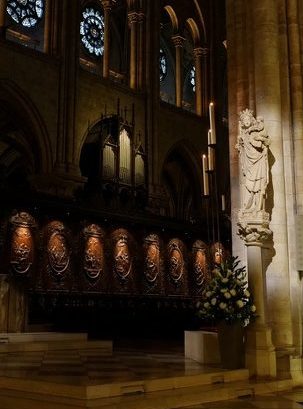
Dismantling the tents
Finally, all the marquees that housed the remains were cleaned and dismantled. Thus freed up, the forecourt will provide space for the heavy plant machinery and the installations of the restoration site. Launched in the spring, the first calls for tenders will allow candidates to participate in one of the most daring architectural projects of the century.
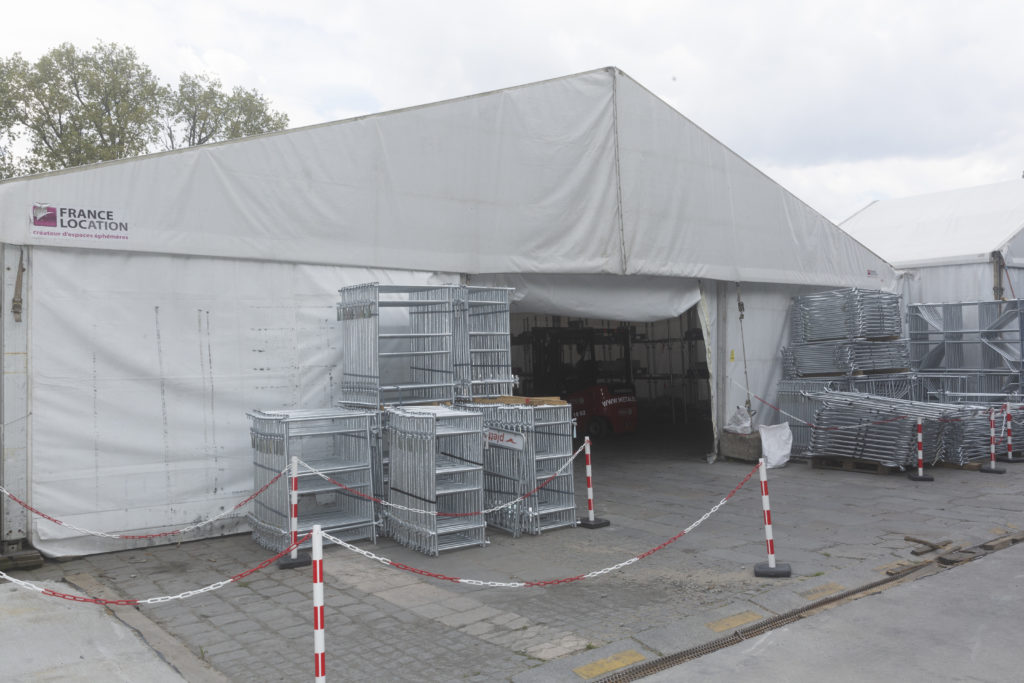
© Photos Alexis Komenda, David Bordes